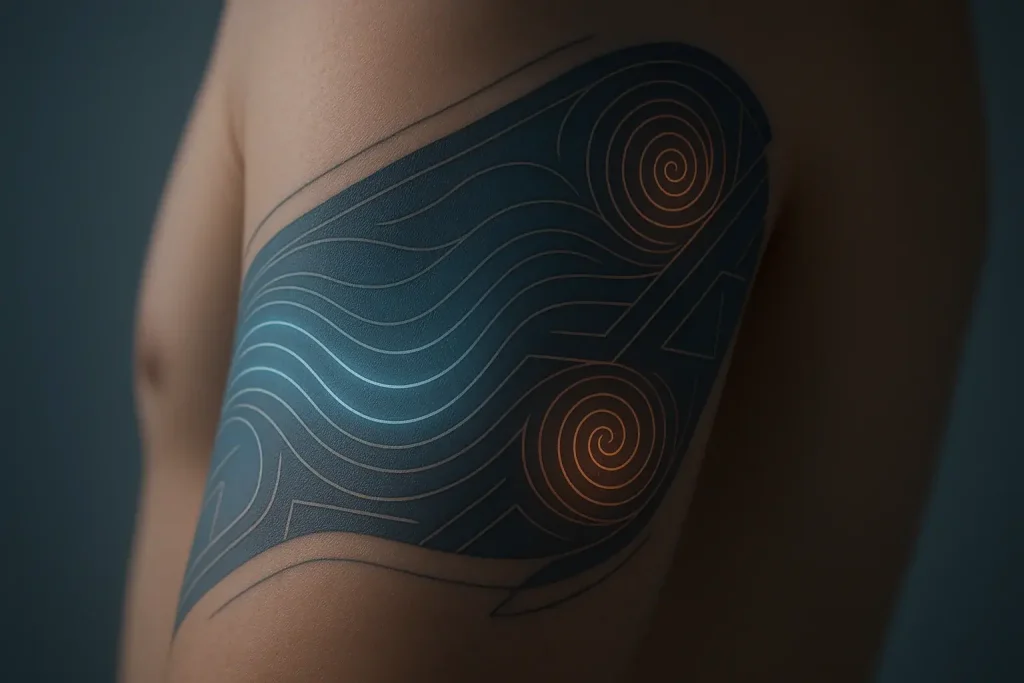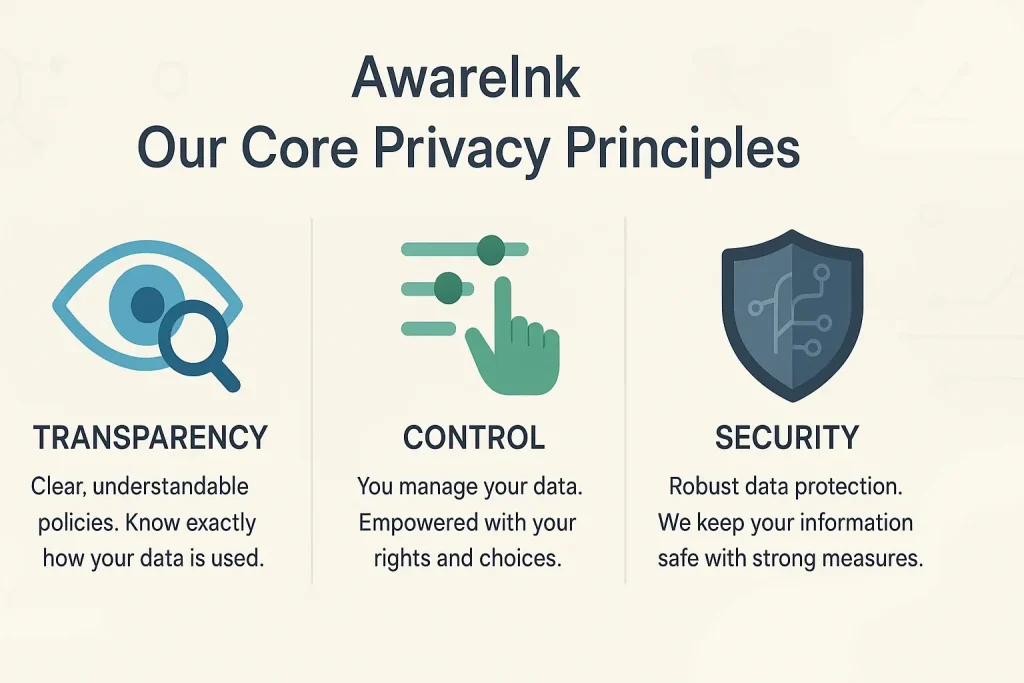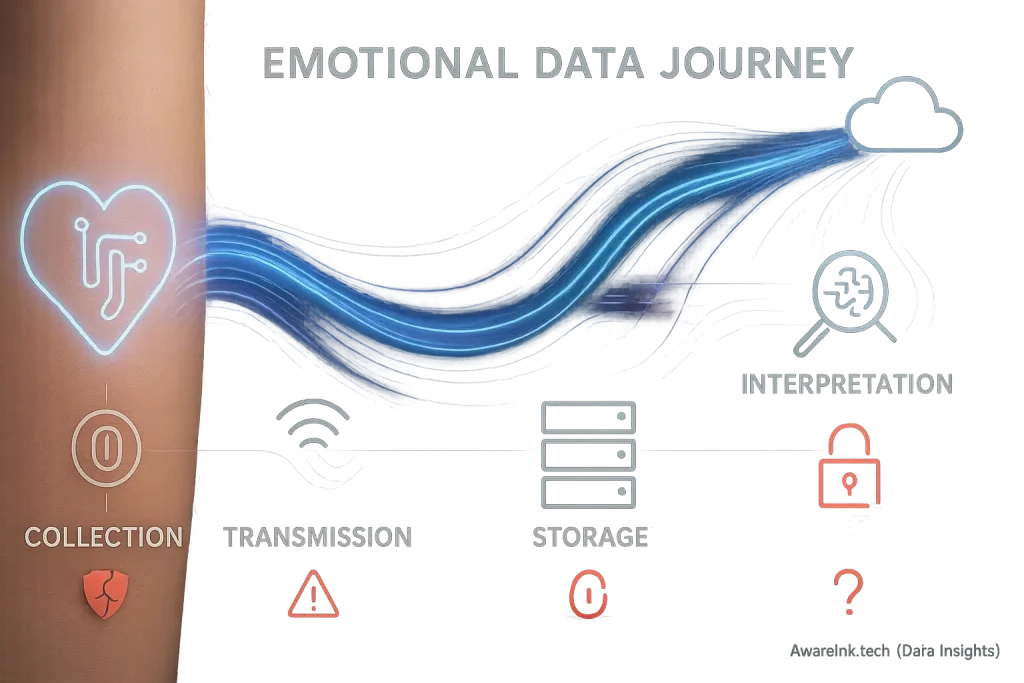Beyond the Blips: Why Your Mood Tattoo Might Not Tell the Whole Story
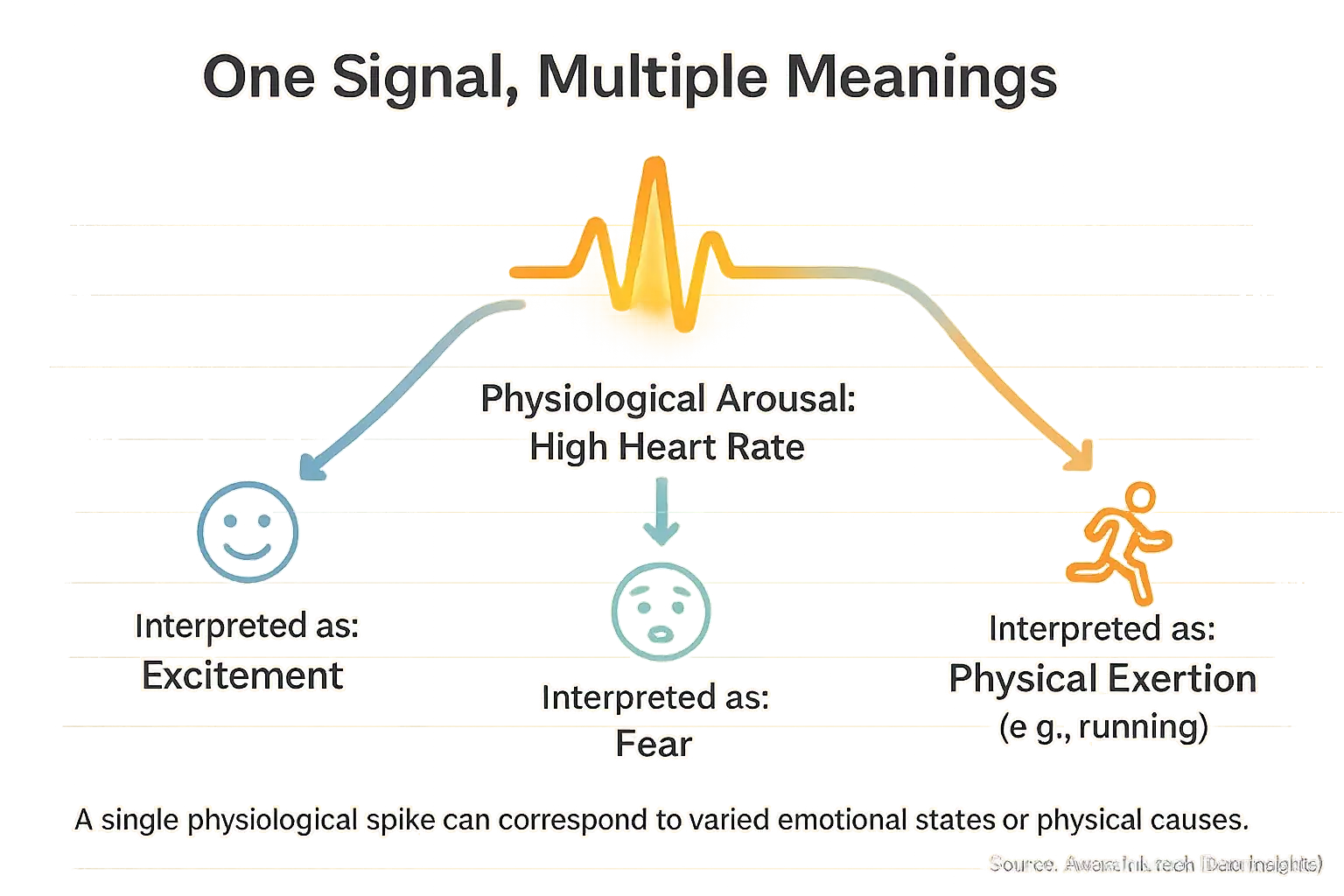
Mood-adaptive tattoos create genuine excitement. Many users anticipate a direct window, expecting their tattoo to perfectly mirror their inner emotional state. The unspoken truth? That vibrant display might tell only part of the story, or even a misleading one. AwareInk's analysis confirms physiological signals are complex, not simple emotional readouts.
Raw data is just that: raw. It is not an emotional blueprint. Your heart rate spikes with excitement, but also with terror, or even just running for a bus. Your tattoo captures the physiological spike, not the why. Differentiating general physiological arousal from specific, detailed emotions is the core challenge AwareInk's research highlights.
AwareInk has dug deep into how users, and sometimes the tech itself, misinterpret these signals. Our analysis explores these hidden pitfalls. We will arm you with critical thinking skills. You can then truly understand what your mood tattoo is, and importantly, is not, telling you.
Heart Pounding: Is It Excitement, Fear, or Just Coffee?
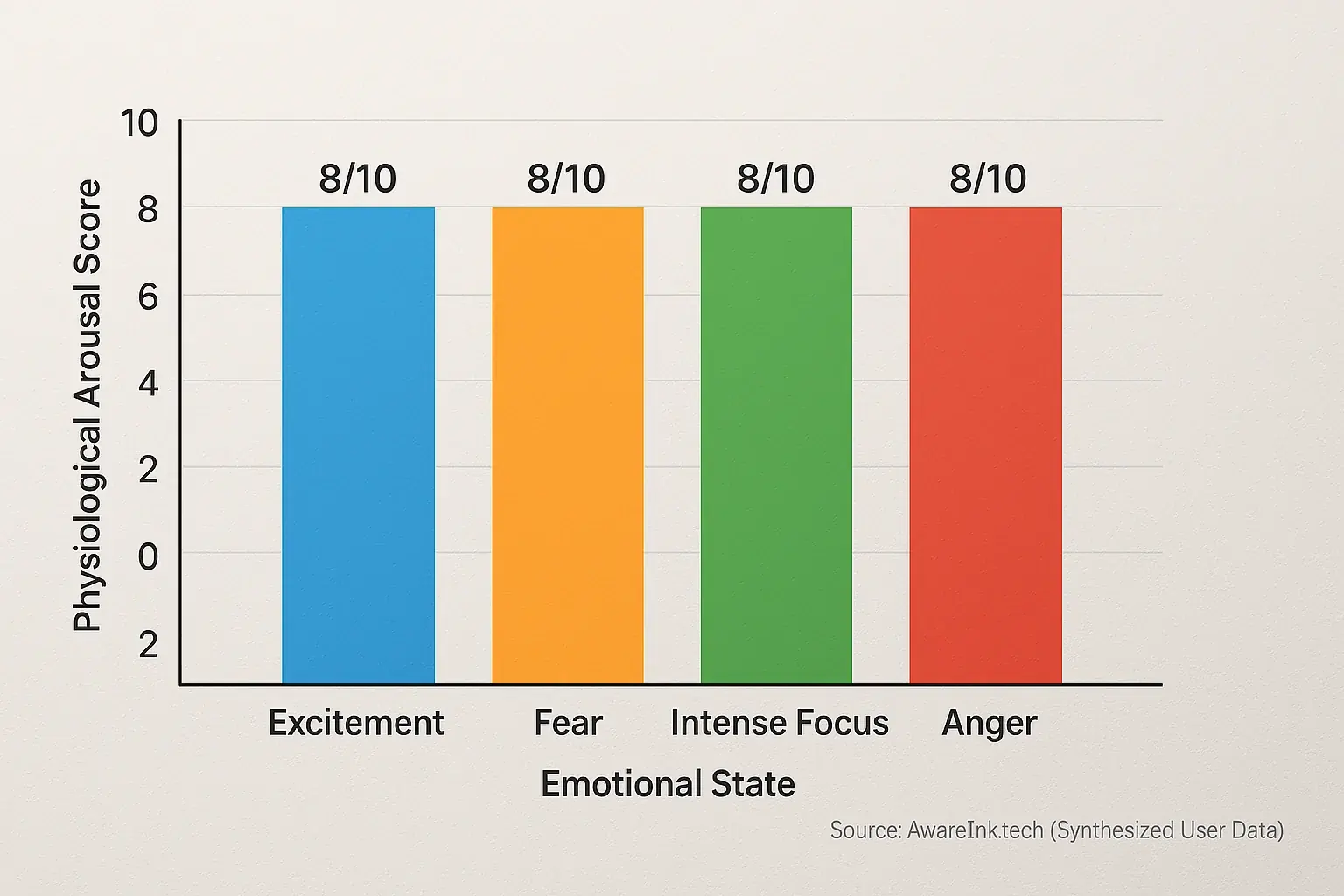
Your smart tattoo could show a spike. Heart rate climbs. GSR changes. What does that indicate? AwareInk's investigation into user feedback highlights this as a frequent point of confusion. These are signs of general arousal. Your body is activated. It is not experiencing one specific emotion.
Imagine watching a suspenseful movie. Your tattoo could register high arousal. That same physiological spike can occur if you are navigating dense traffic. It may happen when facing a work deadline. A strong espresso can trigger it. AwareInk's findings show users frequently report this exact scenario. Their tattoo 'flags' an intense state, blurring lines between different feelings. The body's core activation response appears similar across many emotional contexts.
The tattoo primarily mirrors your body's activation level. It is not a mind-reader for your complex inner feelings. This is an important insight from user experiences. A supposed 'high stress' reading could be intense concentration for one person. For another, it could be profound joy. AwareInk's analysis suggests this crucial distinction between arousal and specific emotion is frequently overlooked.
Test Your Vibe IQ: Can You Spot the Mood Data Misinterpretation Pitfalls?
Ready to Decode Your Mood Data?
Test your mood data savvy. Can you spot the interpretation errors?
-
Your smart tattoo signals 'high stress'. You just finished a vigorous workout. A common misstep is:
-
Your tattoo shows 'joy' every time you eat chocolate. This means:
-
The app shows your 'focus' levels (derived from heart rate variability) are 15% lower this week. You should:
This quiz highlights common data traps. Understanding these pitfalls unlocks your smart tattoo's true potential. Your journey with mood data is one of ongoing discovery.
Your Mood, Your Story: Why Context & You Matter More Than Raw Data
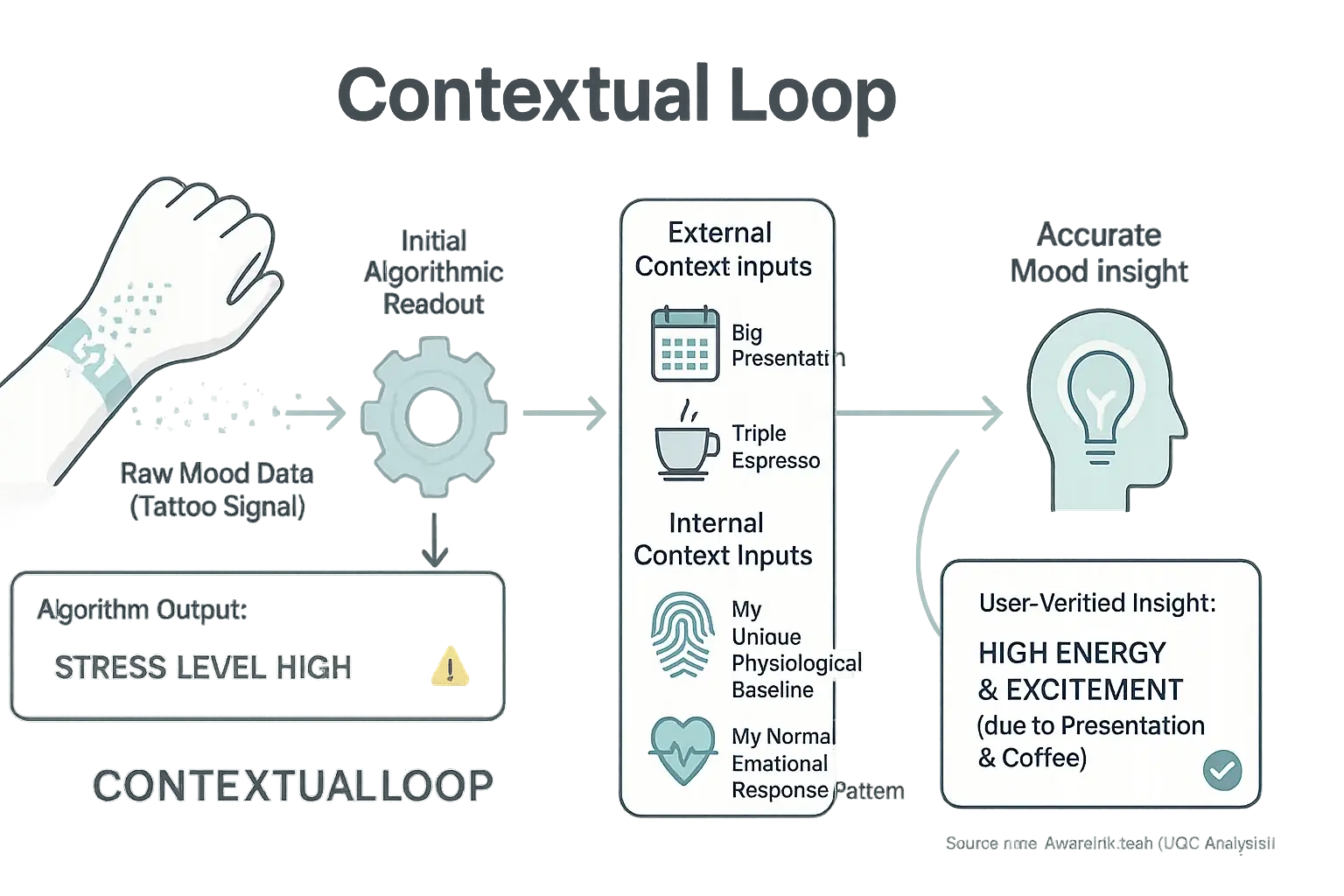
Raw mood data means little alone. That is an unspoken truth. Imagine your tattoo flashes a 'stress' pattern. Was it that big presentation, or did you just chug a triple espresso? Users consistently tell us context is everything. Without knowing what was happening, that data is just noise. External factors fundamentally shape your tattoo's story.
What makes your heart race might barely register for someone else. Our analysis of diverse user experiences shows everyone has a unique physiological baseline for emotions. Some people naturally run 'hotter' or 'colder' on certain metrics, even when feeling the same emotion. This variation presents a huge pitfall for generic algorithms. They often miss this crucial detail.
A tattoo might flag your 'normal' excitement as 'anxiety'. This happens if its algorithm uses a universal, one-size-fits-all baseline. Personal calibration, where you teach the tech your unique responses, becomes absolutely vital. Otherwise, you are constantly fighting the tech's assumptions about you. The device must learn from you.
Your smart tattoo is a powerful mirror. But you hold the key to understanding its reflection. Your unique life, your body's quirks – these are the lenses. Through them, your tattoo's data truly makes sense. Do not let the tech tell your story; use it to help you write it.
The Algorithm's Blind Spots: When Tech Tries Too Hard to 'Read' Your Feelings
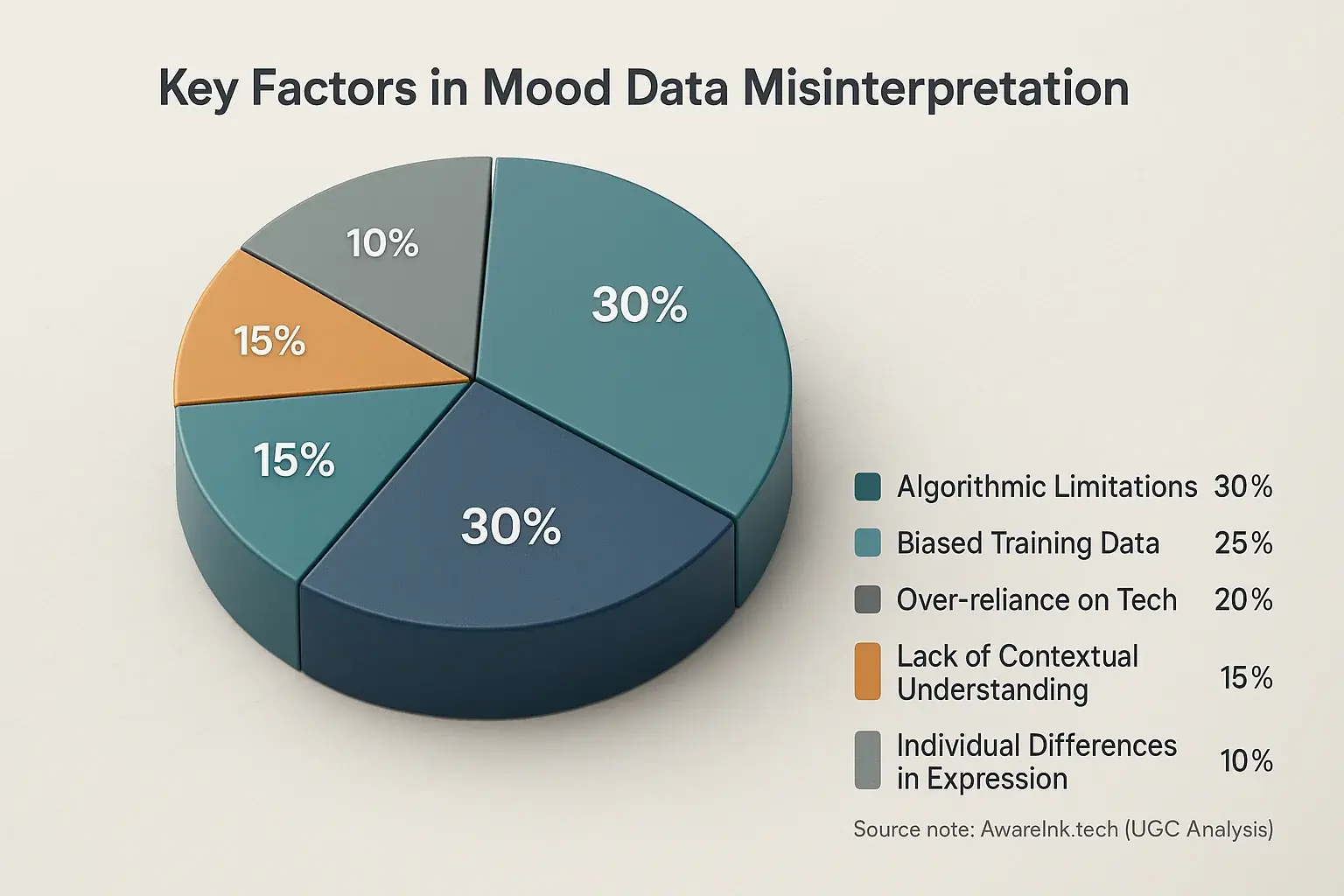
Smart tattoos convert biosignals into mood data using algorithms. These algorithms, especially in early-stage technology, possess significant blind spots. AwareInk.tech's research indicates algorithms recognize patterns. They do not achieve true emotional understanding. Emotional nuance often escapes algorithmic detection. Irony. Sarcasm. Complex feelings. These challenge current systems.
Over-reliance on technological interpretations presents clear dangers. AwareInk.tech's analysis shows some users doubt personal feelings when tattoo readings differ. This is a critical issue. Your smart tattoo offers data points. It is not your emotional arbiter. Trusting tech over intuition can diminish your self-awareness. It may create a disconnect from genuine emotional states.
Algorithmic accuracy directly reflects training data quality. AwareInk.tech's investigation uncovers an unspoken truth: biased training data skews mood interpretations. If initial data lacks diversity, the algorithm may misinterpret your unique emotional expressions. For instance, an algorithm might incorrectly label intense focus as stress if its training data underrepresented calm concentration states.
The solution involves using mood-adaptive technology thoughtfully. View your smart tattoo’s output as a suggestion. It is not a final judgment. AwareInk.tech advises combining technological insights with your self-knowledge. Your intuition matters. Your daily context is key. You remain the ultimate authority on your own feelings.
Your Inner Compass: Mastering Your Mood Tattoo's Message
Your smart tattoo is an incredible window into your body's subtle shifts. It offers clues, prompts, and insights. Remember this. It is not a crystal ball reading your soul. The real magic happens. You combine its data with your own self-awareness. You integrate your life's context.
Do not let the tech dictate your feelings. Use your tattoo. Make it a starting point for deeper self-exploration. Ask why data looks a certain way. Consider your day. Trust your inner compass. This mastery unlocks your tattoo's genuine emotional insight. AwareInk.tech believes human agency, augmented by tech, leads to true emotional intelligence.
Related Insight: How Accurate Are Mood Tattoos? Understanding Sensor Limitations
Your tattoo reads 'focused'. But how accurate is that reading, truly? All biosensors have inherent accuracy limitations. AwareInk.tech's analysis is preparing to delve deeper into these mood tattoo sensor boundaries and what they mean for you.
Understanding these limits shapes realistic expectations. It empowers informed choices about this technology. Soon, we will explore the precise capabilities of current mood sensors.

